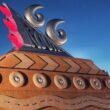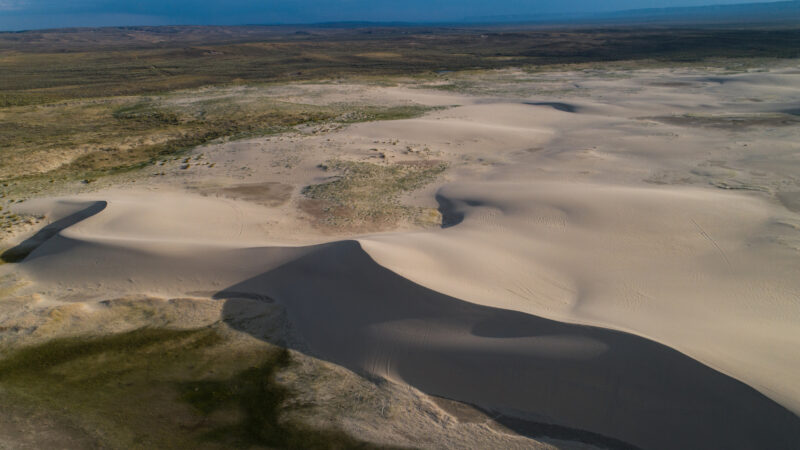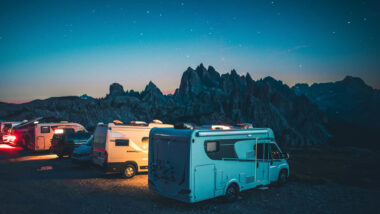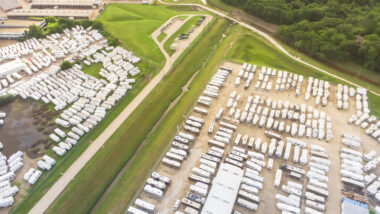Table of Contents Show
Did you know you can find beach-like sand dunes in landlocked states far from any ocean or lake?
The state of Wyoming has its own unique sandy landscape just north of Rock Springs. It’s not part of the National Park System, but it’s well worth visiting this strange other-worldly location at Killpecker Sand Dunes.
Other sand dunes in the country include White Sands National Park, the world’s largest gypsum dune field, in southern New Mexico. Then there’s Great Sand Dunes National Park and Preserve, the tallest dunes in North America, in southwestern Colorado.
Let’s learn why you should explore Killpecker Sand Dunes on foot or on four wheels!
What Is Killpecker Sand Dunes?
Killpecker Sand Dunes in Wyoming is part of the Greater Sand Dunes Area of Critical Environmental Concern (ACEC). These are areas of public land that require special attention to protect and prevent irreparable damage.
The area encompasses approximately 109,000 acres and stretches from the Green River Basin in the east into the Great Divide Basin in the west. These 55 miles across the Continental Divide make the Killpecker Sand Dunes the world’s second-largest active sand dune field.
It is active because its landscape changes from the wind blowing and shaping the dunes. Due to this movement, it is also considered one of the few singing or booming sand dunes in the world.
The round and small sand grains cause friction as they fall down the sides of the dune, creating an audible vibration. Wind and people walking on the dunes can also cause a sound.
Besides the soft sand dunes open to hiking, ATVing, and horseback riding, you’ll also see remains of the geologic past with buttes and spires scattered throughout the area, including the famous Boar’s Tusk.
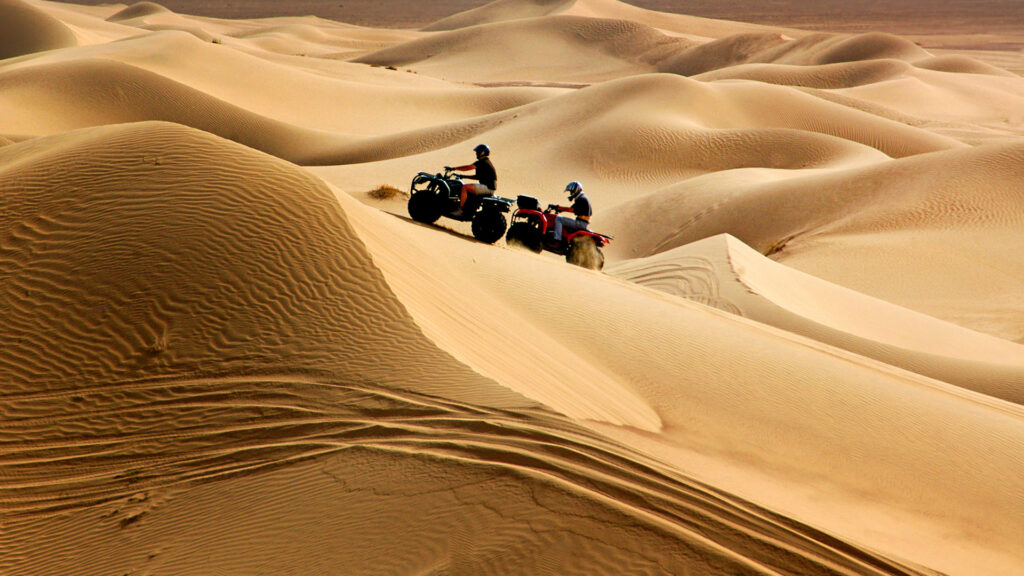
Where Is Killpecker Sand Dunes?
The Killpecker Sand Dunes lie north of Rock Springs in southwestern Wyoming. The Open Play Area is less than an hour from Rock Springs, Wyo., and about 90 minutes south of Boulder, Wyo.
Regardless of which way you come, you have limited cell service and must have a high-clearance four-by-four vehicle. Highway 191 and County Road 17 will get you to the Open Play Area and campground.
How Do You Get to Killpecker Sand Dunes?
From Interstate-80, you can take Highway 191 north from Rock Springs, about 10 miles to County Road 17. You’ll see a sign that gives directions to the sand dunes and Boar’s Tusk.
Coming from the north from Boulder, Wyo., you can take Highway 191 south to County Road 17. It’s pretty easy to access from either direction.
If you’re coming from the southeast around Table Rock, Wyo., you can take I-80 to Rock Springs for the fastest route. If you’d rather travel back roads, you can exit I-80 in Point of Rocks and go east on the paved road past the Jim Bridger Power Plant.
Then continue west as the road forks to the Natural Corrals, and then turn north over the ridge to the wildlife viewing area and the Killpecker Dune Field. This is shorter mileage but will take about 15 more minutes.
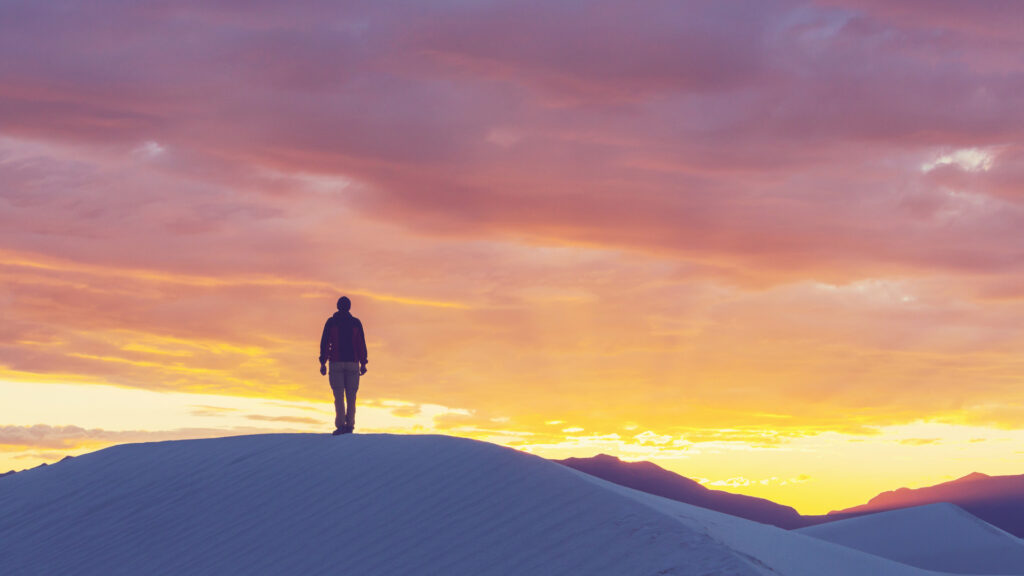
Things to Do at Killpecker Sand Dunes
While visiting Killpecker Sand Dunes, you can spend a couple of hours or an entire day exploring the unique landscape. It’s truly an outdoor sandbox for endless hours of recreational fun.
1. Go Off-Roading
You can use motorized vehicles at Killpecker Sand Dunes. Bring your dune buggy, dirt bike, or ATV and explore all 11,000 acres of the Open Play Area.
Some dunes reach up to 100 feet in height, so expert riders will love the thrill of tackling those monsters. Just make sure to find a spot to watch the sunset before heading back to the parking area.
Keep in Mind: While in Wyoming, make sure you Don’t Waste Your Time At These National Parks!
2. Hike the Dunes
If you don’t have an ATV, you can still explore the sand dunes on foot. You’ll walk the same land that Native Americans once traversed hundreds of years ago.
Some of the most popular hikes include North Table Mountain, South Table Mountain, Black Rock, Spring Butte, and the Leucite Hills. Pack a picnic and settle down to watch the sunset. But remember — always pack out what you bring in!
3. Visit Boar’s Tusk
The famous Boar’s Tusk is the core of an ancient volcano. The 400-foot tall tower rises from the desert floor along the Overland Emigrant Trail. Similar to Devil’s Tower in eastern Wyoming, Boar’s Tusk is sacred to Native Americans of the region. If you’re not hiking to Boar’s Tusk, you must have a high-clearance four-by-four vehicle.
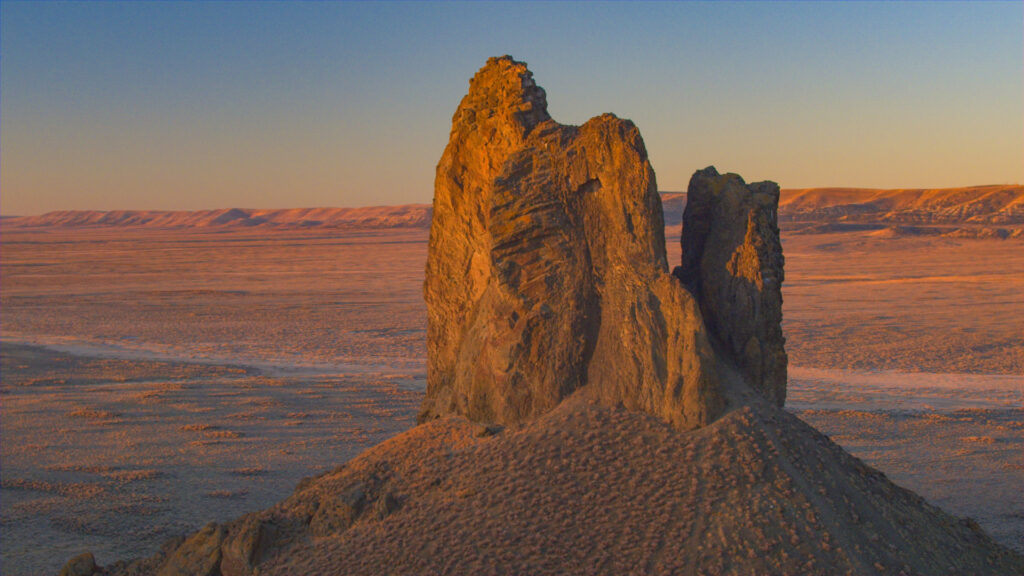
4. View the Wildlife
Killpecker Sand Dunes is also a prime location to view wild horses and a herd of rare desert elk. The wild horses are descendants of horses brought over by the first Spanish settlers.
You’ll find the best viewing location at the Leucite Hills, which has springs of fresh water. The desert elk are a bit more elusive. But if you catch a sighting, you’ll see a herd that exists nowhere else in North America.
Does It Cost to Visit Killpecker Sand Dunes?
The Bureau of Land Management (BLM) manages the Killpecker Sand Dunes Open Play Area, and it doesn’t cost to visit. However, ensure to pack in and pack out anything you bring.
If you pack a picnic dinner to watch the sunset, don’t leave trash on the sand dunes. If you eat a snack while hiking to Boar’s Tusk, tuck away your trash in your backpack.
Although the BLM tries to maintain every acre properly, it’s up to visitors to also do their part to keep this land free and open to the public.
Keep in Mind: After a day at the sand dunes, sit back and relax at one of these Wyoming Hot Springs!
Is There Camping at Killpecker Sand Dunes?
If you want to enjoy dispersed camping near the sand dunes, you’ll find a developed campground close by. The property has a vault toilet and fire rings. Glass bottles aren’t allowed.
Once you turn north onto the Sand Dunes access road from County Road 17, take a right (east) at the intersection about a mile down the road. Then travel 1 mile to the campground.
Remember to Leave No Trace When Exploring Killpecker Sand Dunes
Killpecker Sand Dunes is a unique area in Wyoming, a landlocked state far from the Pacific Ocean. Seeing these rising dunes in person is truly an incredible experience.
Plus, the sights of the jagged rock formations rising from the desert floor are other-worldly. So whether you want to just spend an hour watching the sun go down or plan on riding your dune buggy for an entire afternoon, you’ll enjoy your visit to Killpecker Sand Dunes.
Have you visited the world’s second-largest active sand dune field?
